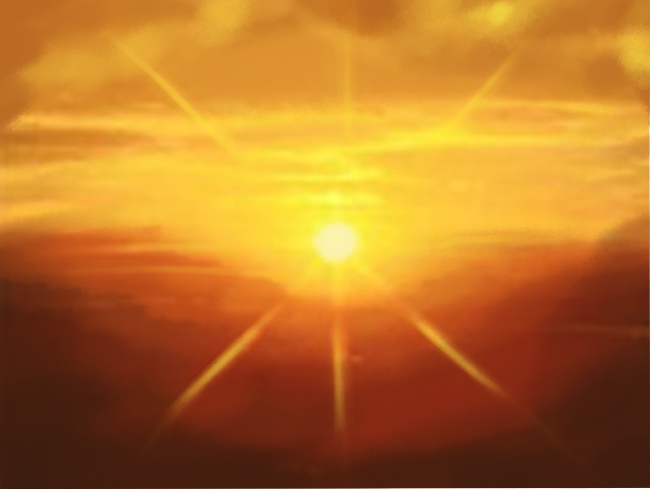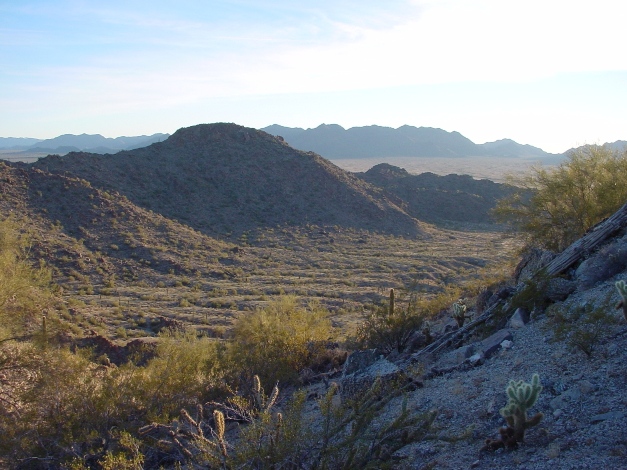February 25, 2011
Conservation Community Will Urge BLM to Adopt
“Solar Energy Zones” for Arizona Public Lands
Public meetings in Phoenix and Tucson to gather comments.
Contact:
Matt Skroch, Arizona Wilderness Coalition, 520-247-1754, matt "at" azwild.org
Mike Quigley, The Wilderness Society, 520-334-8741, mike_quigley "at" tws.org
Sandy Bahr, Gr. Canyon Chapter-Sierra Club, 602-999-5790, sandy.bahr "at" sierraclub.org

PHOENIX—Conservation groups are applauding the Bureau of Land Management for seizing the opportunity to develop alternative energy on public lands in Arizona, where the sun shines more than 300 days a year. However, wildlife and wilderness advocates are concerned about the BLM’s preference for solar developments on more than 500,000 acres of public lands that have been inventoried and documented for potential designation under the Wilderness Act.
Public meetings coming up on March 1st in Phoenix and March 2nd in Tucson will allow the BLM and Department of Energy to gather public comment on two different options: the agency-preferred “Solar Development Alternative,” and a “Solar Energy Zones Alternative,” preferred by state and national conservation groups.
Public meetings are being held:
PHOENIX: Tuesday, March 1 at 7:00pm: Sheraton Crescent Hotel, 2620 W. Dunlap Avenue, Phoenix
TUCSON: Wednesday, March 2 at 7:00pm: Tucson Marriott University Park, 880 East Second Street, Tucson
The Bureau of Land Management (BLM) and Department of Energy (DOE) have released a Draft Solar Energy Development Programmatic Environmental Impact Statement (PEIS) for six western states (Arizona, California, Colorado, Nevada, New Mexico, and Utah). The purpose is to develop a BLM program to process future solar applications on public lands it administers. See http://solareis.anl.gov/ for maps and details.
“We commend BLM for releasing plans for how to facilitate solar development around the West,” says Matt Skroch, executive director of the Arizona Wilderness Coalition (AWC). “But the agency’s preferred alternative includes developments on more than 500,000 acres of citizen-proposed wilderness areas around Arizona. These are cream-of-the-crop lands where hundreds of citizen volunteers have documented irreplaceable wilderness values that protect wildlife, water supplies, and backcountry recreation. We feel strongly that solar development should be excluded from these lands and focused on public lands where disturbance is already high.” Click here to see the Arizona Wilderness Coalition’s solar analysis map.
Conservation groups are urging the BLM to adopt the "Solar Energy Zones" alternative, which would encourage a more strategic, streamlined process for approving large-scale solar energy projects on public lands -- one that guides clean energy projects to areas with the greatest solar potential and fewest conflicts with wildlife, water, wilderness, and other important natural resources. AWC also supports a concurrent process where additional lands are being identified on mine tailings, abandoned agriculture, and other highly impacted sites.

"There are places where commercial-scale solar development on public lands is appropriate, and there are places where it is not," said Mike Quigley, Arizona wildlands campaigns coordinator with The Wilderness Society. "The Solar Energy Zones alternative provides more realistic and useful guidance, protecting wildlands and facilitating a rapid transition to a renewable energy economy."
The BLM’s projections are that no more than 21,816 acres of public land in Arizona will be developed for solar over the next 20 years, so conservation groups are raising questions about how such a vast area—their preferred 4.5 million acres—contributes to guiding appropriate plans for development. The Solar Development Alternative, preferred by BLM and DOE, indicates that less than ½ of 1% of these lands would ever be developed in the next 20 years.
“With the Solar Energy Zones Alternative, less truly is more,” says Ian Dowdy, urban planner and conservation outreach associate working on Sonoran Desert lands for the Arizona Wilderness Coalition. “It makes far more sense to focus on areas that will produce the most solar power with the fewest conflicts, rather than wasting time and resources trying to fix poorly-sited projects. Going forward, the BLM should also develop a process for designating new zones as appropriate, so we can continue to responsibly build a clean energy future. This is particularly important for Arizona because the BLM is currently considering only a few relatively small zones in the state that have significant potential for viable solar development.”
Since 2000, citizens and volunteers have inventoried Arizona’s BLM lands for wilderness characteristics, noting opportunities for solitude, the lack of substantial human development, and other characters defined by the 1964 Wilderness Act (P.L. 88-577). These citizen wilderness proposals cover approximately 2.2 million acres of BLM land in Arizona. Many of these areas have been identified by the agency as Areas with Wilderness Characteristics in various Resource Management Plans (RMPs). Under Interior Secretarial Order 3310 (issued on December 23, 2010), lands with wilderness characteristics, regardless of whether currently adopted in Resource Management Plans, will be inventoried and included in RMP’s. Citizen wilderness proposals are required to be considered by the BLM during this inventory process.
“We think this process provides a great opportunity to identify appropriate lands for solar energy projects, while not sacrificing protection for wildlands, wildlife habitat, and key native plant communities,” says Sandy Bahr, Chapter Director for the Sierra Club’s Grand Canyon (Arizona) Chapter. “It is important for the people of Arizona to let the BLM know that we want solar energy and protection of our public lands. We can have both.”
For specific examples of potential conflict between the BLM’s Solar Development Alternative and citizen proposed wilderness areas, contact Kate Mackay at 602-571-2603, kate "at" azwild.org
Additional Resources:
To download the PEIS, click here.
To see a map of areas in conflict with proposed wilderness, click here.
*****

